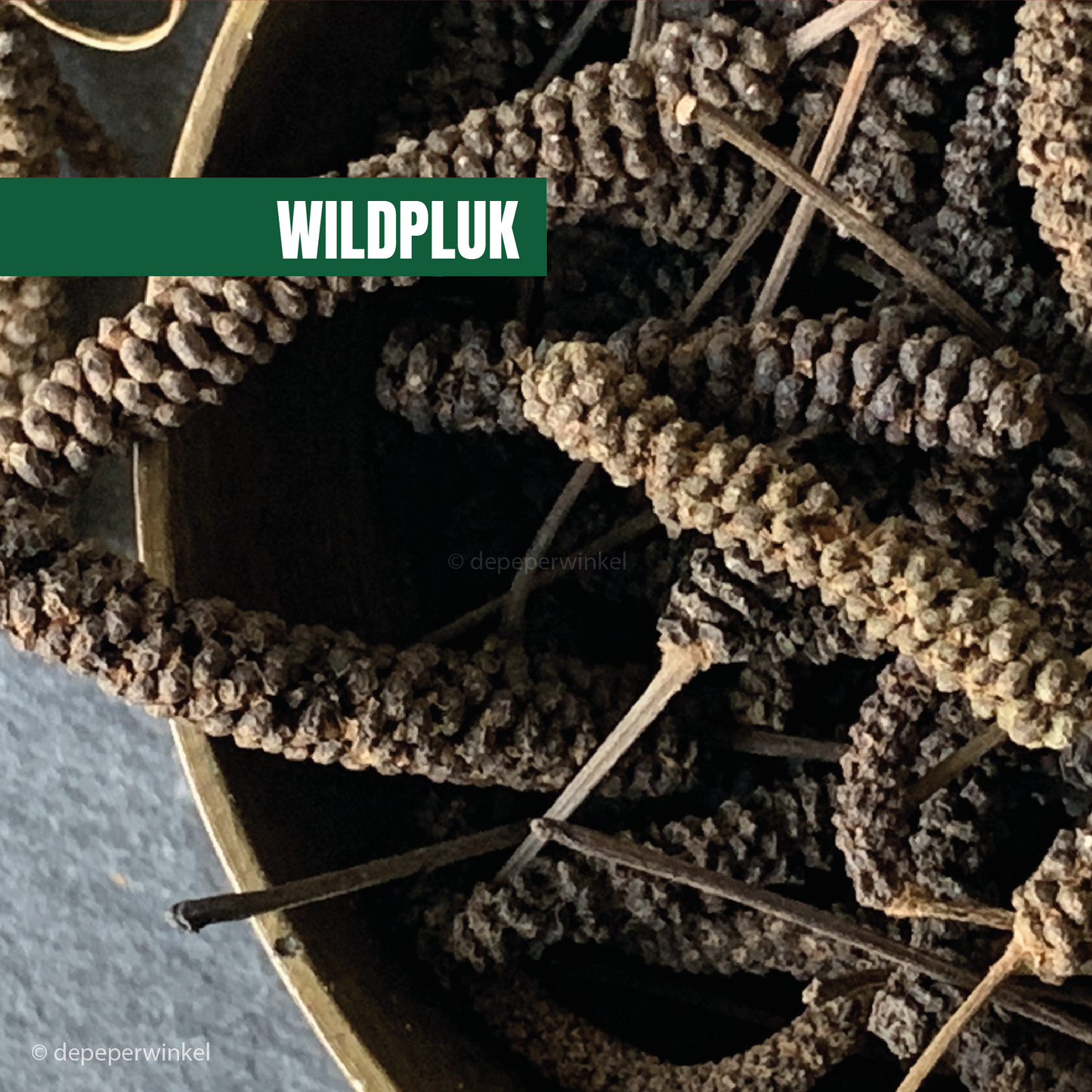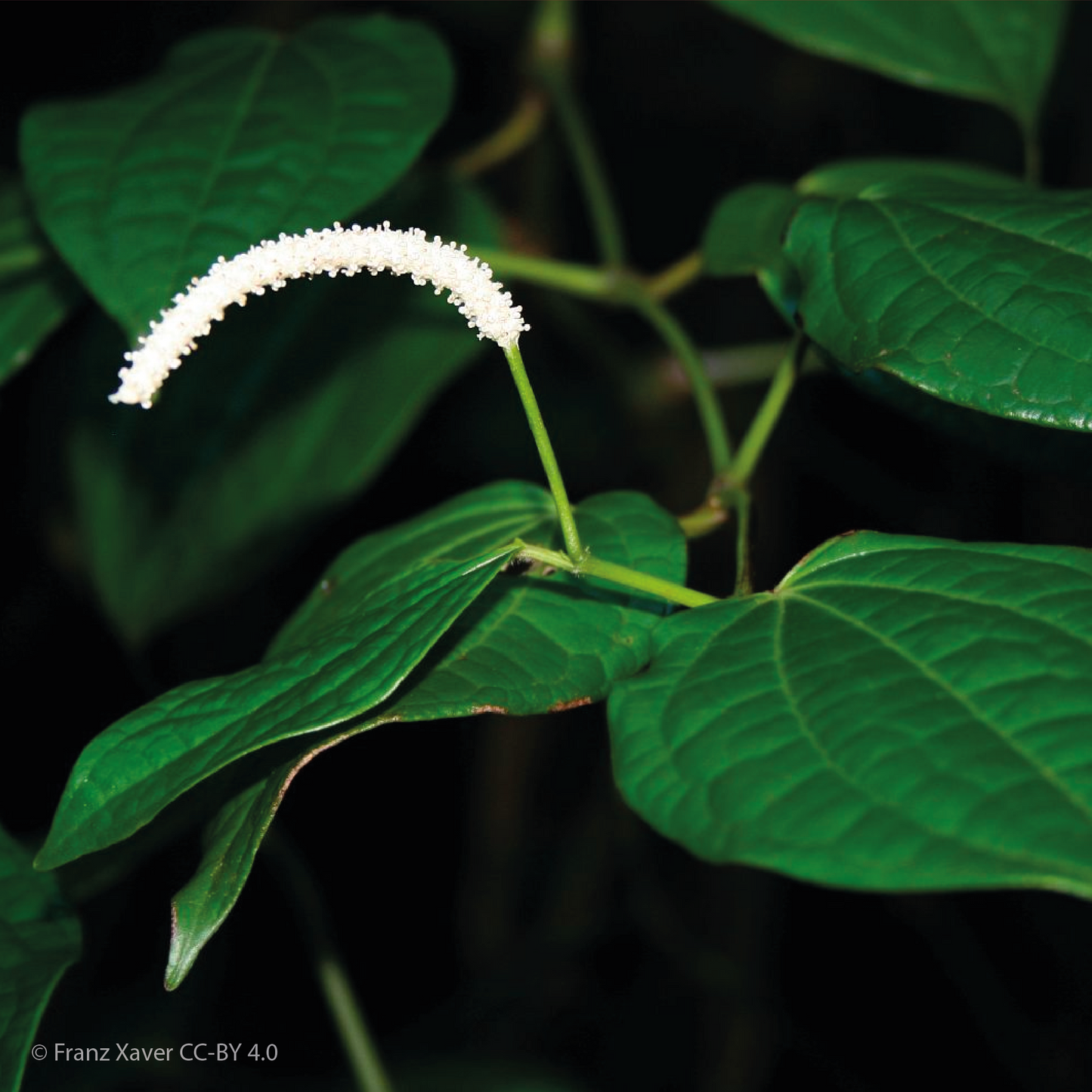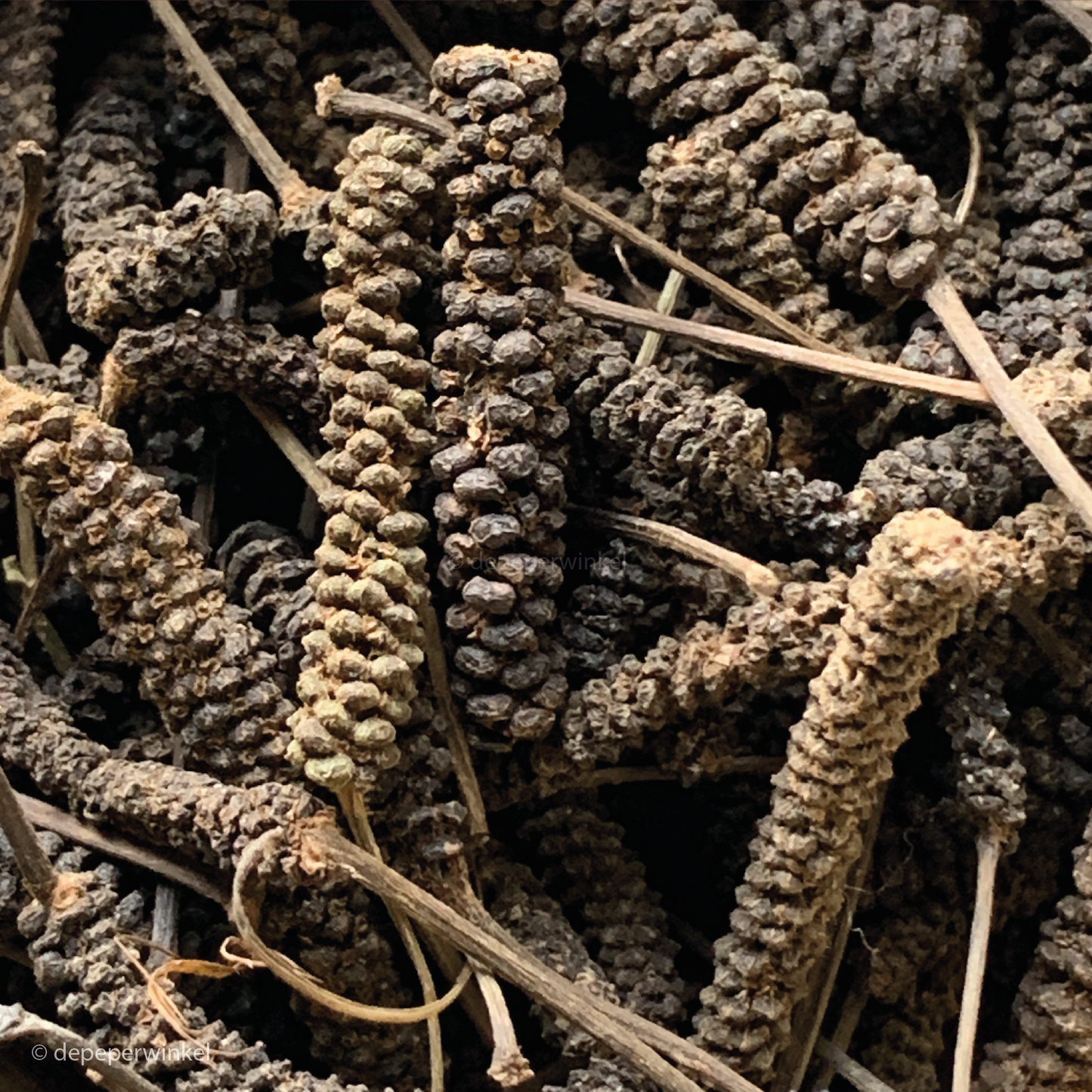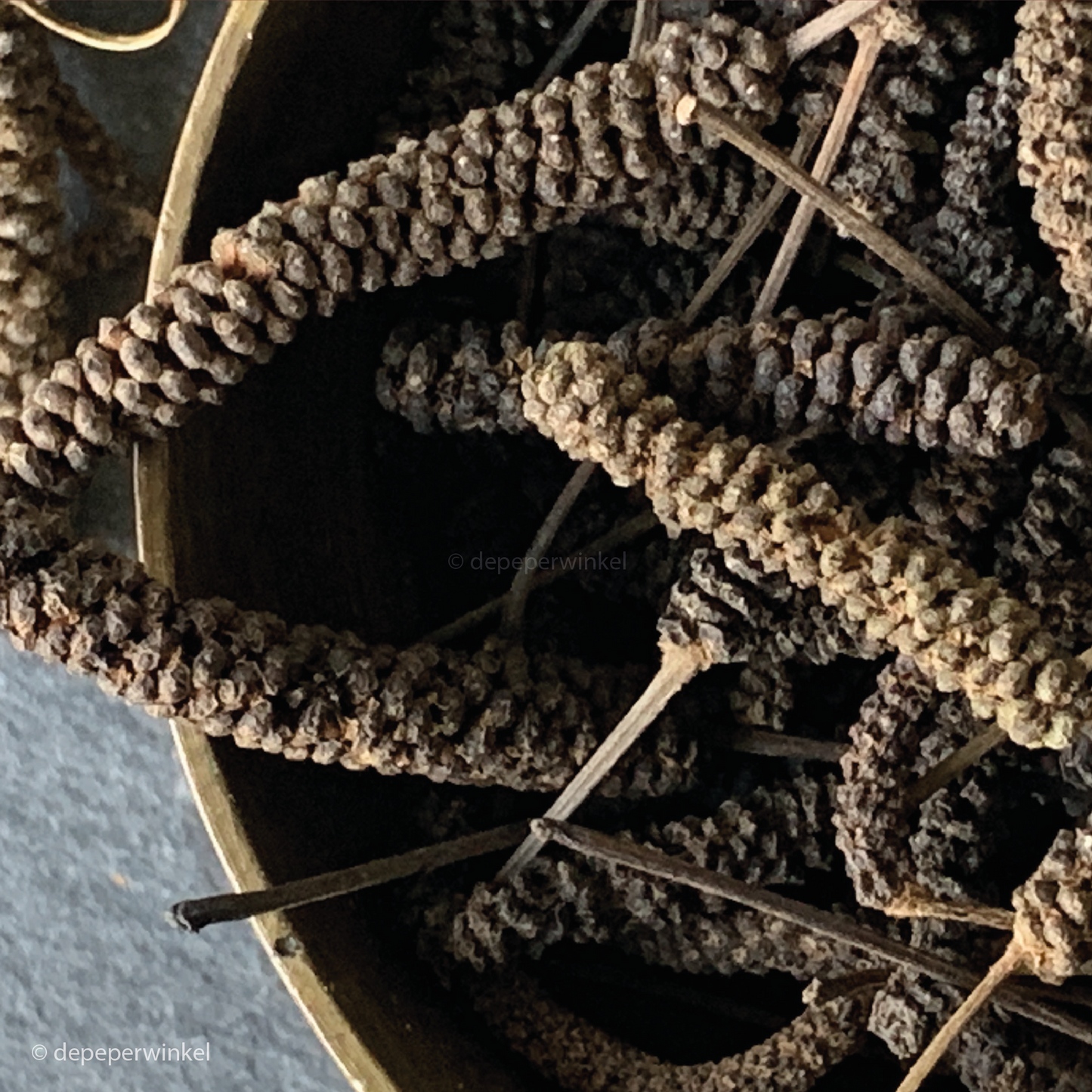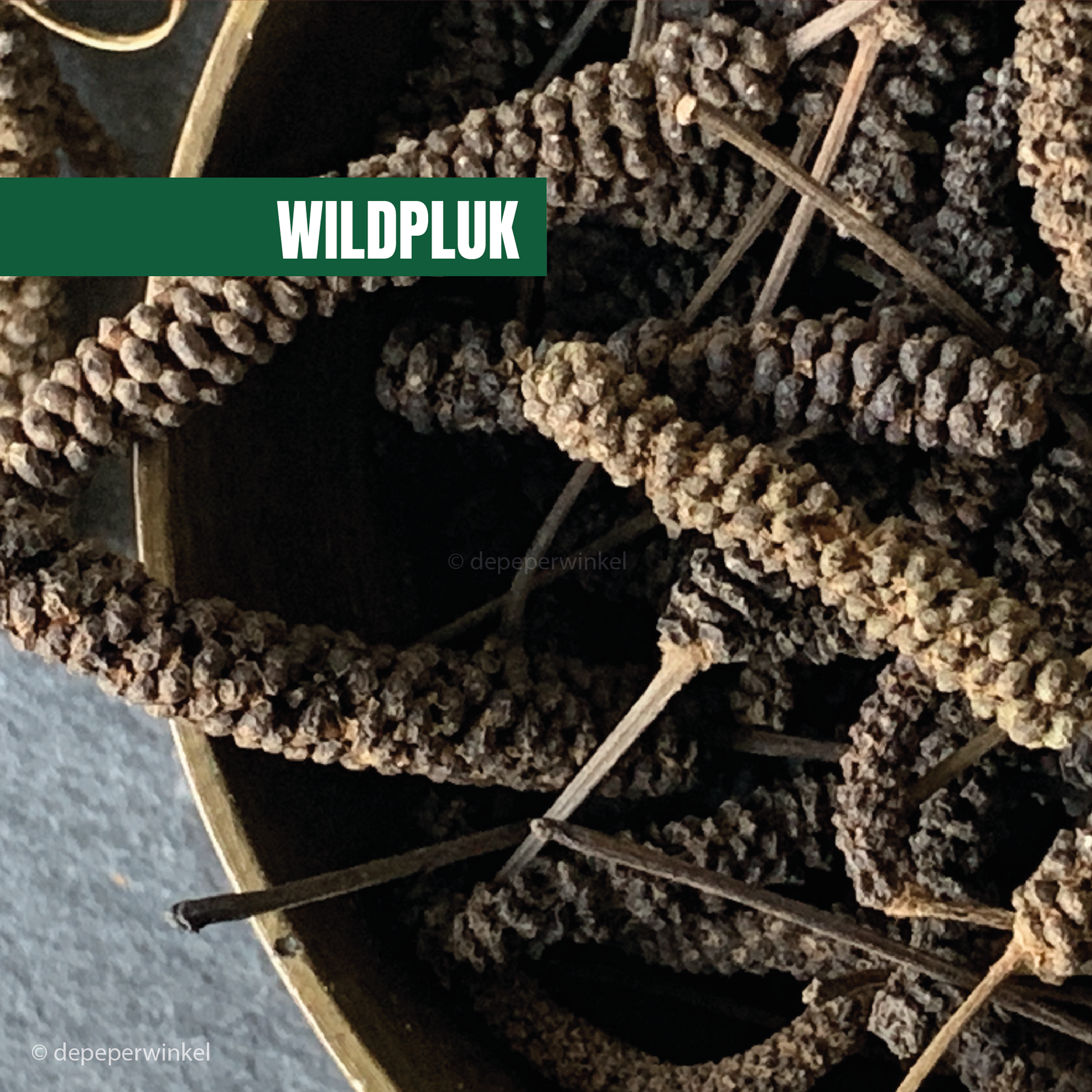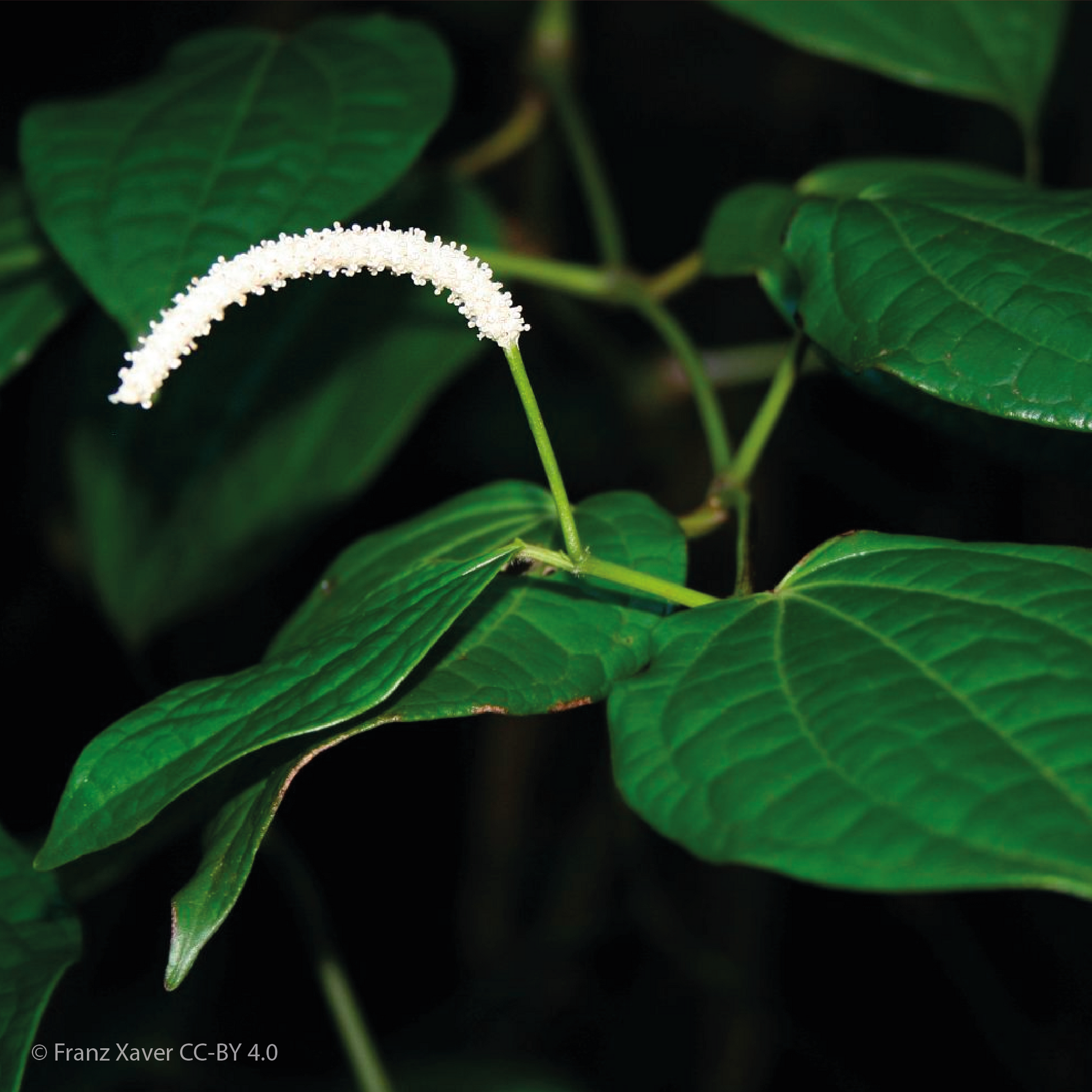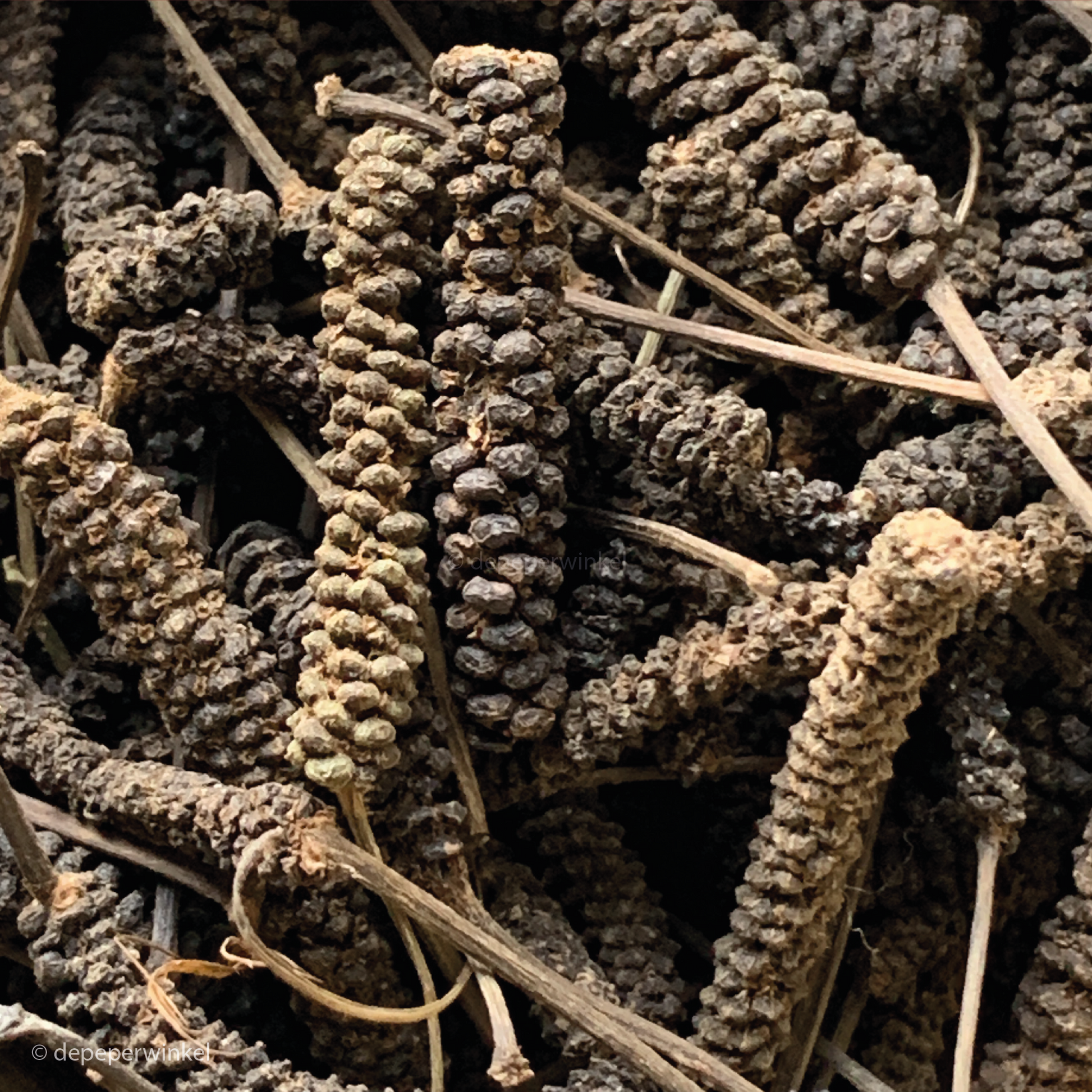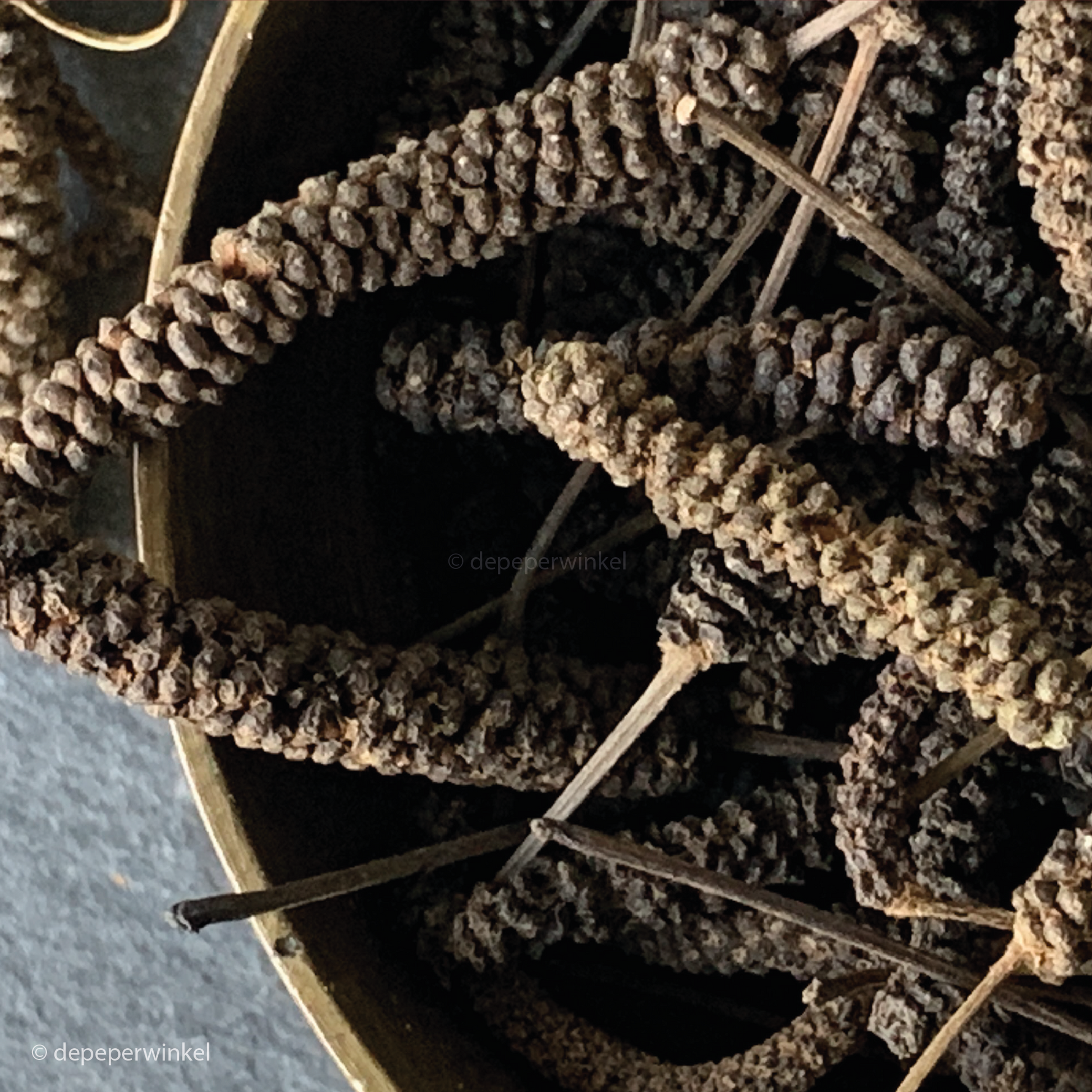This Cape long (forest) pepper is a hot, ripe pepper with a complex flavor. The catkins are much longer than those of Asian long peppers, averaging about 10 cm.
The Cape long pepper (Piper capense) is a perennial, evergreen climber with broad green leaves. It grows to a shrub-like height of 2 to 4 meters. The inflorescence is spike-shaped. During the rainy season, the small flowers are hidden beneath scales that also trap the seeds during the winter. They resemble willow catkins.
The catkins contain round to oval seeds with a diameter of 2 mm. They are harvested whole in January, including the stem, and are sold both fresh and dried. To distinguish this long pepper from the imported Indian long peppers (temist or farenji timiz) this native pepper is called abesha timiz, or simply timiz.,
The Cape long pepper grows in a zone from West Africa to Ethiopia, and also occurs in South Africa, hence the botanical name Piper capense. In southern Africa it blooms The plant blooms from August to February and bears fruit from October to June. It can even bloom year-round if there is sufficient water.
In Ethiopia, next to the Piper capense grows also the Piper umbellatum, a pepper species originally from South America. Timiz is very popular in Ethiopia, Unlike South American peppers, which are rarely gathered, let alone eaten. Incidentally, people there are fond of Asian long peppers, which are usually sweeter and imported in large quantities.
Most timiz peppers in Ethiopia come from the Bonga rainforest. Because of the weather conditions, it's almost impossible for farmers in Bonga to dry the peppers in the sun, as is done elsewhere. Sun-drying takes ten to twenty days, depending on the number of hours of sunshine. The quality of sun-drying is often variable, because the conditions are difficult to monitor. Therefore, the peppers are usually dried after they have dried. cleaned, on a bed of wood and bamboo laid, to be above to be dried on an open fire. This drying process takes only a few days, and takes place in a more controlled manner. The sun-dried peppers are much loved for their fresher color and more complex aroma, but are rare.
Smell and taste
This long pepper isn't very hot. The first impression you get from it is a smoky, camphorated, bitter pepper, somewhat like the African cubeb or Ashanti pepper. Gradually, you'll also taste notes of tobacco and resin. These are the main flavor components:
- α and β-pinene, woody pine scent, as in cumin, juniper and hemp,
- sabinen, responsible for the woody, camphor-like flavour of black pepper, among other things
- germacreen D, spicy woody
- α-cubeben, camphorous, like cubeb pepper,
- β-caryophyllene, sweet spicy and woody
- safrole, sasafras aroma, also present in cinnamon and nutmeg,
Culinary use and preparation
Because of its intense flavor, the pepper is rarely used in Ethiopia in itself, but in the spice mixtures berber and mekelesha, a mixture of timiz, cinnamon, cloves, black pepper, nutmeg, black onion seed and black cardamom.
The easiest way to use long pepper is to cut or break it into pieces and then grind or pound these pieces, for example in a coffee grinder that you have specifically designed for grinding spices.
Cape long pepper combines excellently with lamb, goat meat, fresh goat cheese (in combination with olive oil and green herbs), duck, game and in general dishes in which cinnamon, cloves and nutmeg (ehuru) are (or can be) used.
Features:
- 100% pepper berries from the Piper capense
- origin: Ethiopia
Assortment
- available in glass (30 grams) and stand-up pouch (no test tubes)
- larger quantities on request
Gift wrapping
- The jar is available in a tasteful gift packaging, consisting of a cube box filled with black tissue paper.
- For an overview of our gift packaging, please refer to the gift packaging section.
General advice
- Use long peppercorns, whole or crushed. When grinding the pepper, grind it just before use and store any excess in a tightly sealed jar.
- the whole or broken pepper is best used in stews, so that the pepper has time to integrate,
- add ground long pepper to your preparation at the very last moment
Save:
- save your long pepper in closed packaging
- preferably store in a dark, dry and cool place
- best before November 2026 (11 2026)
- This expiration date is an indication
Batch number
The batch number helps us track which batch an item originates from. It's listed on the packing slip and invoice.
